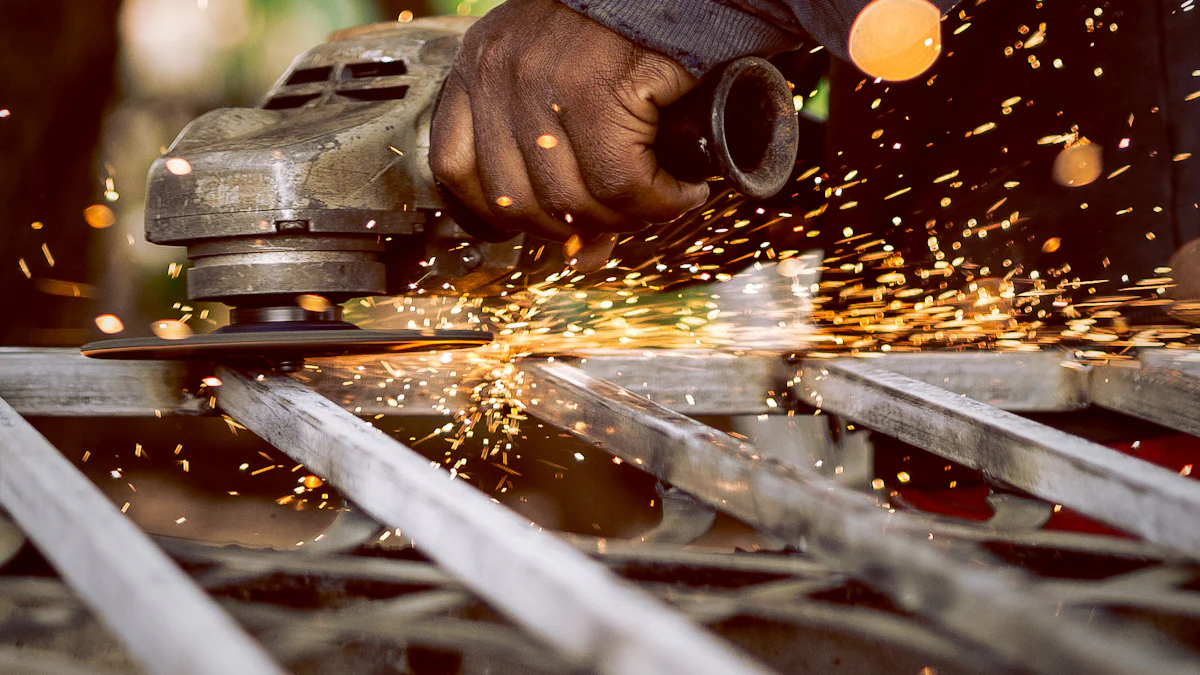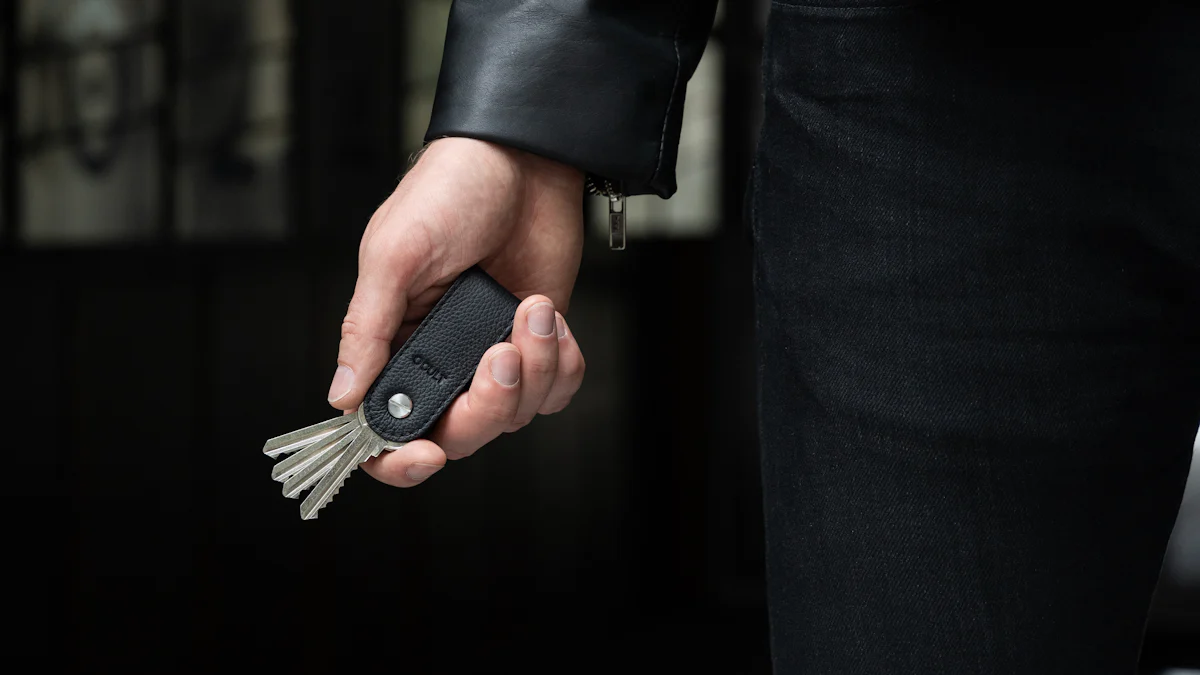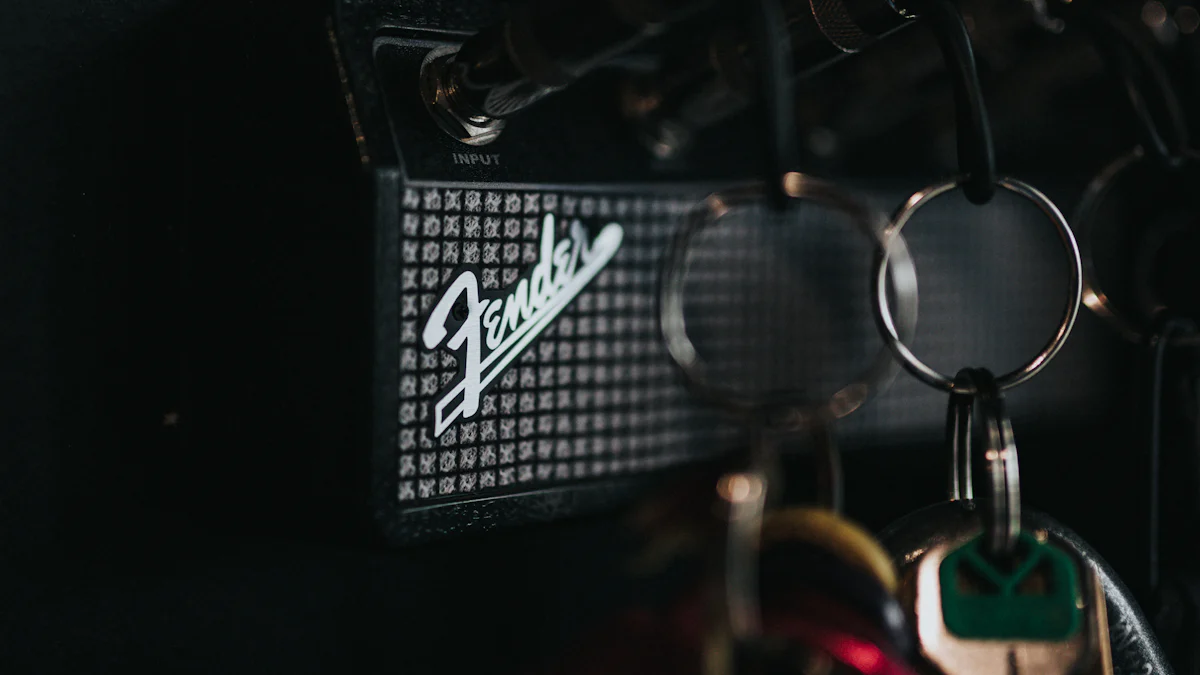Steps to Duplicate Keys Using a Key Cutting Machine

A key cutting machine is a specialized tool designed to create precise duplicates of keys. It works by tracing the unique grooves of an original key and replicating them onto a blank key. This process ensures that the duplicate functions just like the original. Precision plays a vital role in achieving an accurate cut, as even minor errors can render the duplicate unusable. Safety is equally important, as the machine involves sharp cutting tools. Understanding how key cutting machine works allows you to handle it effectively and produce reliable duplicates.
Key Takeaways
Preparation is key - Identify the correct type of key and ensure the blank key matches the original in size and shape to avoid unusable duplicates. Set up your machine properly - Place the key cutting machine on a stable surface and check all components for cleanliness and functionality before use.
- Align keys accurately: Securely clamp the original key and blank key in the machine, ensuring they are properly aligned for precise cutting.
- Monitor the cutting process: Guide the cutting wheel slowly and steadily, avoiding excessive pressure to maintain smooth and even cuts.
- Inspect and refine: After cutting, check the duplicate key for imperfections and use a file to smooth out any rough edges for optimal performance.
- Test the duplicate key: Always insert the new key into the lock to ensure it fits and turns smoothly, making adjustments as necessary.
- Practice safety: Handle the key cutting machine with care, following safety guidelines to minimize risks while duplicating keys.
Preparing for Key Duplication
Before you begin duplicating a key, preparation is crucial. Proper setup ensures accuracy and prevents errors during the process. Follow these steps to get started.
Choosing the Right Key Blank
Identifying the type of key to duplicate.
The first step is identifying the type of key you want to duplicate. Examine the original key closely. Look for specific features such as grooves, notches, or unique patterns. These details determine the type of blank key you need. For example, standard house keys require different blanks compared to high-security or automotive keys.
Ensuring the key blank matches the original key's size and type.
Once you identify the key type, select a blank key that matches the original in size, shape, and material. A mismatch can lead to an unusable duplicate. Always double-check the blank key’s dimensions against the original to ensure compatibility. Using the correct blank is essential for understanding how key cutting machine works effectively.
Setting Up the Key Cutting Machine
Placing the machine on a stable, flat surface.
Position the key cutting machine on a sturdy, flat surface. Stability prevents vibrations during the cutting process, which could affect the precision of the duplicate. A solid base ensures the machine operates smoothly.
Checking the machine's components for cleanliness and functionality.
Inspect the machine thoroughly before use. Ensure all components, including the clamps and cutting wheel, are clean and free from debris. Dirt or shavings can interfere with the cutting process. Test the machine’s functionality by running it briefly without any keys to confirm it operates correctly.
Ensuring the machine is powered and ready for use.
Connect the machine to a reliable power source. Verify that it powers on and is ready for operation. Some machines may have additional settings or adjustments, so consult the user manual if necessary. Proper setup guarantees the machine performs as intended.
Securing the Original Key and Key Blank
Properly aligning the original key in the machine's clamp.
Place the original key in the machine’s clamp. Align it carefully to ensure the grooves and edges are positioned correctly. Misalignment can result in an inaccurate duplicate. Tighten the clamp securely to hold the key in place during the cutting process.
Positioning the key blank in the corresponding clamp.
Insert the blank key into the corresponding clamp on the machine. Align it parallel to the original key. This alignment allows the machine to trace the original key’s grooves accurately. Secure the blank key firmly to prevent movement while cutting.
By following these preparation steps, you set the foundation for a successful key duplication process. Proper alignment, cleanliness, and the right materials ensure the duplicate key will function as intended.
How Key Cutting Machine Works: The Cutting Process

Understanding how key cutting machine works during the cutting process is essential for creating accurate duplicates. This stage requires focus and steady hands to ensure the duplicate key matches the original perfectly.
Operating the Key Cutting Machine
Adjusting the machine's guide to trace the original key's grooves.
Begin by adjusting the machine’s guide to align with the grooves of the original key. The guide acts as a tracer, following the unique pattern of the original key. Carefully position the guide so it mirrors the key’s notches and grooves. This alignment ensures the cutting wheel replicates the design accurately onto the blank key.
Starting the machine and carefully guiding the cutting wheel.
Once the guide is set, power on the machine. Slowly and steadily guide the cutting wheel along the path traced by the guide. Avoid rushing this step. A slow and deliberate pace helps maintain precision. Keep your hands steady to prevent deviations that could affect the duplicate’s functionality.
Monitoring the Cutting Process
Ensuring smooth and even cuts without applying excessive pressure.
As the machine cuts, observe the process closely. Ensure the cuts are smooth and even. Avoid applying too much pressure on the cutting wheel, as this can damage the blank key or create uneven grooves. Let the machine do the work while you maintain control over its movement.
Pausing to remove any debris or shavings that may obstruct the process.
Debris or metal shavings may accumulate during cutting. Pause periodically to clear these obstructions. Use a small brush or cloth to remove them from the machine and the keys. Keeping the workspace clean ensures the cutting wheel operates without interference, resulting in a more precise duplicate.
Finishing the Cut
Inspecting the duplicate key for any rough edges or imperfections.
After completing the cut, inspect the duplicate key carefully. Look for rough edges, burrs, or imperfections along the grooves. These flaws can prevent the key from functioning properly in the lock. A thorough inspection ensures the key is ready for final adjustments.
Using a file to smooth out any sharp or uneven areas.
Use a fine file to smooth out any sharp or uneven areas on the duplicate key. Gently file along the edges and grooves to remove burrs and create a polished finish. This step enhances the key’s fit and ensures it operates smoothly in the lock.
By following these steps, you can master how key cutting machine works during the cutting process. Precision and attention to detail are crucial at this stage. With practice, you’ll gain confidence in creating reliable duplicates that function seamlessly.
Testing the Duplicate Key

Testing the duplicate key ensures it functions as intended. This step verifies the accuracy of the cutting process and identifies any adjustments needed for a perfect fit.
Checking the Key's Fit
Inserting the duplicate key into the lock to ensure it fits properly.
Insert the newly cut key into the lock. Pay attention to how it slides in. A proper fit means the key enters the lock smoothly without resistance. If the key struggles to fit, it may indicate an issue with the alignment or dimensions of the duplicate.
Ensuring the key turns smoothly without resistance.
Turn the key gently within the lock. Observe its movement. A well-cut key should rotate effortlessly without sticking or jamming. If the key feels stiff or fails to turn, it may require further refinement. Smooth operation confirms that the duplicate matches the original key’s design.
Troubleshooting Common Issues
Adjusting the duplicate key if it doesn't fit or turn correctly.
If the duplicate key doesn’t fit or turn properly, inspect it closely. Look for uneven edges, burrs, or imperfections along the grooves. Use a fine file to make minor adjustments. File down any raised areas or rough spots that might obstruct the key’s movement. Precision is critical during this step to avoid over-filing, which could render the key unusable.
Repeating the cutting process if necessary to improve accuracy.
In some cases, adjustments may not resolve the issue. When this happens, you may need to repeat the cutting process. Secure the original key and blank key in the machine again. Carefully trace the original key’s grooves to ensure accuracy. Regular maintenance of the key cutting machine, such as cleaning and blade replacement, can help prevent inaccuracies during this step. Understanding how key cutting machine works allows you to refine your technique and produce reliable duplicates.
Pro Tip: Always test the duplicate key in the lock it is intended for. Locks can vary slightly, even within the same type, so testing ensures compatibility.
By thoroughly testing and troubleshooting, you can ensure the duplicate key functions seamlessly. This step not only guarantees usability but also builds confidence in your ability to create precise duplicates.
Duplicating keys with a key cutting machine involves three essential steps: preparation, cutting, and testing. Each step demands precision and focus to ensure the duplicate functions seamlessly. Paying attention to details like alignment, smooth cuts, and proper testing guarantees success.
Accuracy plays a critical role in this process. Even minor errors can lead to unusable duplicates, especially for high-security locks. Always prioritize safety and patience when handling the machine. By mastering these techniques, you can confidently create reliable duplicates while maintaining the integrity of the original key’s design.
FAQ
How long does it take to cut a key?
The time required to cut a key depends on the type of key and the equipment used. For standard house keys, the process typically takes just a few minutes. High-security or specialized keys may take longer due to their intricate designs. If you're using a professional locksmith, they can often provide an estimated timeframe based on the key type.
How much does it cost to cut a key?
The cost of key duplication varies depending on the type of key and the service provider. Standard keys are usually affordable, ranging from $2 to $10. High-security or restricted keys can cost significantly more, sometimes exceeding $50. Always check with your locksmith or hardware store for specific pricing.
Can a locksmith replace broken keys or cut specialized keys?
Yes, locksmiths can replace broken keys and cut specialized keys, including high-security and automotive keys. They use advanced key cutting machines and techniques to ensure precision. If your key is broken, bring all the pieces to the locksmith to help them create an accurate duplicate.
How does a key cutting machine work?
A key cutting machine works by tracing the grooves of an original key and replicating them onto a blank key. The machine uses a cutting wheel to carve the design into the blank. Proper alignment of the original and blank keys is crucial for accuracy. This process ensures the duplicate functions like the original.
Is using a key cutting machine dangerous?
Safety precautions are essential.
What factors should you consider when duplicating a key?
When duplicating a key, consider the type of key, the equipment used, and the locksmith's expertise. Standard keys require basic tools, while high-security keys may need specialized machines. Ensure the blank key matches the original in size and material. Precision and attention to detail are vital for a functional duplicate.
What key cutting machine should you buy?
The choice of a key cutting machine depends on your needs. For standard residential keys, a manual key cutting machine may suffice. If you plan to duplicate high-security or automotive keys, consider investing in a laser key cutting machine. Evaluate the pros and cons of each option before making a decision.
Why is understanding key duplication important?
Understanding key duplication helps you achieve accurate results and ensures the duplicate functions properly. Knowing the fundamentals, such as key types, cutting tools, and techniques, is essential. Whether you're a locksmith or someone duplicating keys for personal use, this knowledge enhances your ability to create reliable duplicates.
How accurate are keys produced by a key cutting machine?
The accuracy of a duplicate key depends on the machine's quality and the operator's skill. High-quality machines and proper alignment produce precise duplicates. Regular maintenance of the machine, such as cleaning and blade replacement, also improves accuracy. Testing the key in its intended lock ensures it works seamlessly.
What should you do if the duplicate key doesn't work?
If the duplicate key doesn't work, inspect it for imperfections like rough edges or uneven grooves. Use a fine file to make minor adjustments. If the issue persists, repeat the cutting process with careful alignment. For high-security keys, consult a professional locksmith for assistance.
See Also
Understanding The Functionality Of Key Cutting Machines
Tips For Efficiently Using A Key Cutting Machine
A Comprehensive Guide To Operating Hair Cutting Machines
